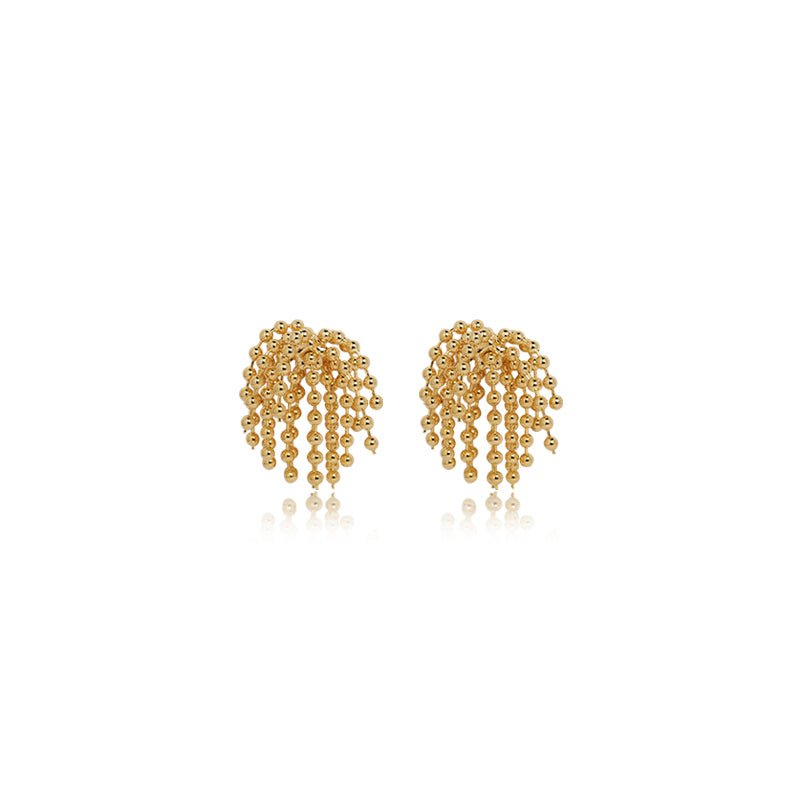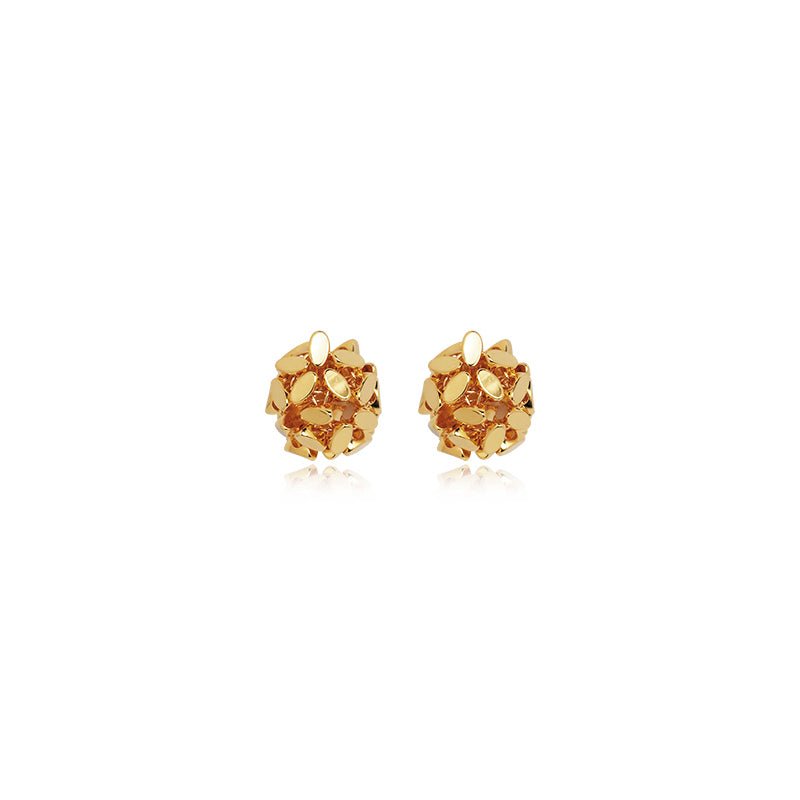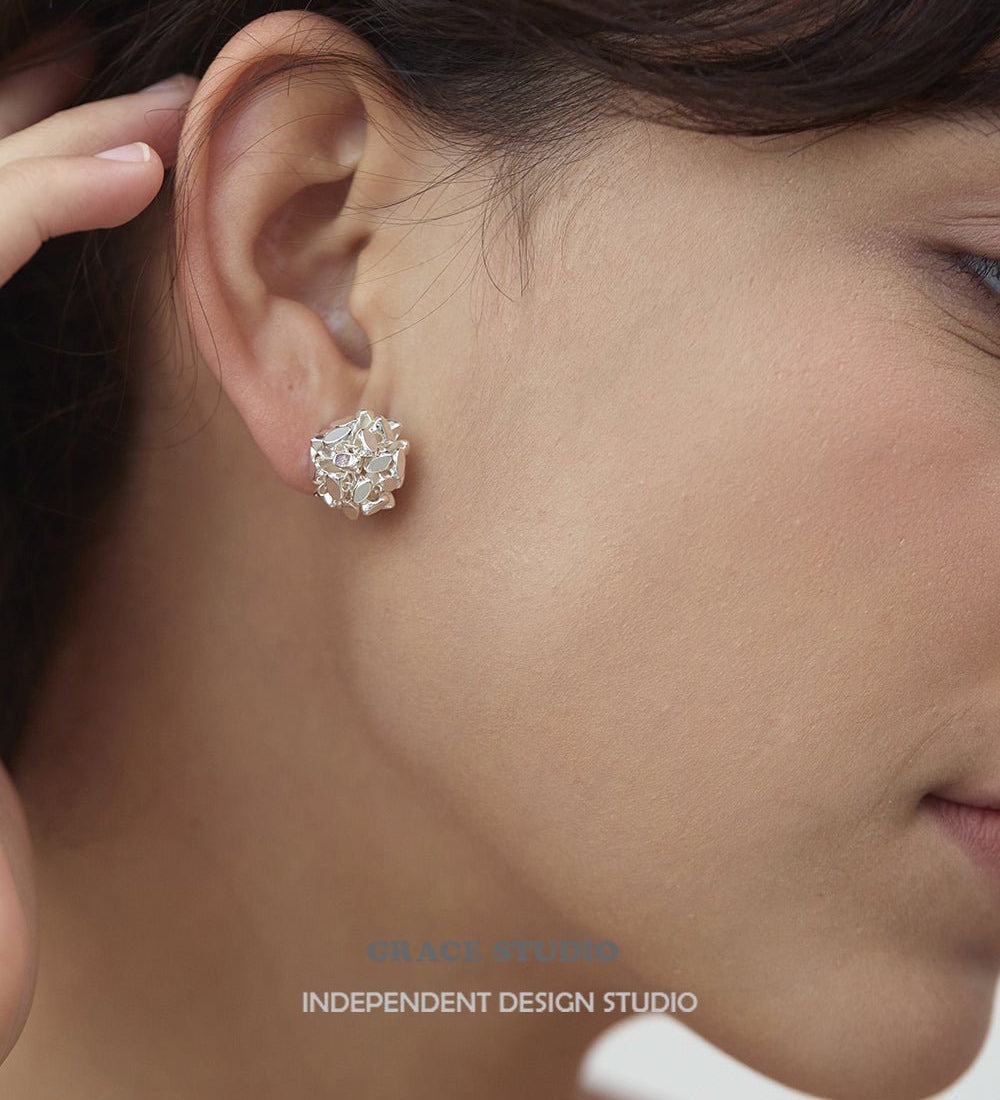How Does Jewelry Tarnish? A Complete Guide to Causes, Types & Prevention
Keeping your jewelry neat, accessible, and untarnished isn't just about aesthetics, it's about protecting your pieces and making your life easier. Whether you have a few favorite necklaces or a sprawling collection of earrings and rings, a well-organized jewelry box can save time, prevent damage, and even prolong the life of your accessories.
But organization isn't just about putting things in the right slot. To really keep your jewelry looking good, you need to understand how tarnish works, why it happens, and how storage habits directly affect it. This guide walks you through everything you need to know, from the science behind tarnishing to how you can structure your jewelry box to prevent it.
What Is Tarnish?
Definition of Tarnish
Tarnish is a thin layer of corrosion that forms on the surface of some metals as they react with elements in the air or with substances from our skin. It doesn’t usually destroy the jewelry, but it dulls the shine and can make pieces look old, dirty, or even cheap.
How It Differs from Dirt, Oxidation, or Rust
Tarnish isn’t the same as dirt, which is just buildup from your skin, dust, or other grime. It also differs from rust, which only affects iron and steel. Tarnish is closer to oxidation, but with a specific visual effect, it creates a discolored film that often looks gray, black, green, or yellow depending on the metal involved.
Common Metals That Tarnish: Silver, Copper, Brass
-
Silver often turns black or dark gray due to its reaction with sulfur in the air.
-
Copper can develop a green patina (like the Statue of Liberty).
-
Brass (an alloy of copper and zinc) can tarnish into a dull brown or greenish shade.
These changes don’t mean your jewelry is ruined, but they do mean you need a plan to slow the process.
Why Does Jewelry Tarnish?
Chemical Reactions with Air (Oxidation)
The most common cause of tarnish is oxidation, a chemical reaction between the metal and elements in the air.
Role of Oxygen, Moisture, and Sulfur in the Air
When metals like silver or copper are exposed to oxygen and moisture, a chemical reaction begins. Silver is particularly sensitive to sulfur, which is present in the air in small amounts from pollution or even nearby household items (like rubber bands or eggs).
How Silver and Copper React Over Time
-
Silver + Sulfur = Silver Sulfide (black tarnish)
-
Copper + Oxygen/Moisture = Copper Oxide (green or brown tarnish)
This is why you might notice silver jewelry darkening if it sits out too long.
Skin Contact and Body Chemistry
What you put on your skin matters almost as much as what’s in the air.
pH Level of Skin
Everyone has a different skin pH. If your skin is more acidic, your jewelry will tarnish faster.
Sweat, Lotion, Perfumes, and Natural Oils
-
Sweat contains salt and moisture, which speeds up corrosion.
-
Lotion and perfume contain chemicals that can react with metals.
-
Natural skin oils can coat jewelry and trap moisture.
It’s not just about what you wear, it’s also when and how.
Environmental Factors
Where you live and how you store your jewelry also matter.
Humidity and Heat
High humidity speeds up tarnish. If you live in a hot, moist climate, your jewelry needs extra protection.
Urban Pollution or Coastal Environments
-
Pollution adds more sulfur and moisture to the air.
-
Salt in coastal air accelerates tarnish, especially for silver and copper.
Storage Habits
How you store your jewelry can either slow down tarnish or make it worse.
Air Exposure
Jewelry left in open trays or hanging racks stays exposed to air 24/7, which guarantees faster tarnishing.
Storing Different Metals Together
Storing silver next to copper or costume pieces can cause cross-reactions. Metals rubbing against each other can also wear off protective coatings.
Which Jewelry Metals Tarnish the Most?
Sterling Silver (925 Silver)
Sterling silver is 92.5% pure silver mixed with other metals, usually copper. That copper makes it tarnish faster. It’s one of the most beautiful yet high-maintenance jewelry metals.
-
Needs regular polishing
-
Should be stored in anti-tarnish bags or cloth
-
Best stored in individual pouches
Copper and Brass
These metals are extremely prone to tarnish. They change color quickly, especially in humid environments.
-
Avoid water exposure
-
Wipe after every wear
-
Store with anti-moisture packets
Plated Jewelry (Gold-Plated, Silver-Plated)
Plated pieces have a thin layer of precious metal over a base metal. Once the coating wears off, tarnish happens fast.
-
Don’t polish aggressively (you’ll remove the plating)
-
Avoid contact with sweat, perfume, and moisture
-
Store in soft cloth away from other metals
Stainless Steel and Solid Gold (Do They Tarnish?)
These are the most tarnish-resistant metals, but they aren’t invincible.
-
Stainless steel barely tarnishes, but it can get dull or scratched
-
Solid gold (especially 14k or higher) resists tarnish but may still get a bit dull with time
How Long Does It Take for Jewelry to Tarnish?
Factors That Affect Tarnishing Speed
Tarnishing can happen in a matter of hours or take months, depending on:
-
The metal type
-
Air exposure
-
Skin contact
-
Storage conditions
-
Environmental humidity
Examples: Silver vs. Gold-Plated Jewelry Timelines
-
Silver: Can tarnish in a week if left out in the open
-
Gold-plated: May look fine for months, but once the layer wears off, the base metal can tarnish quickly
-
Copper or brass: May tarnish within days in humid areas
Signs Your Jewelry Is Beginning to Tarnish
-
Loss of shine
-
Discoloration (black, green, brown, or yellowish film)
-
Greenish residue on skin
-
Uneven tone on the surface of metal
Can Tarnish Damage Your Jewelry Permanently?
Cosmetic vs. Structural Damage
Tarnish often starts as a cosmetic issue. It makes metals look dull or discolored, but in most cases, the jewelry beneath the surface is fine. A quick clean can restore the shine.
But leave it too long, and tarnish can go deeper. That’s when the risk moves from cosmetic to structural.
When Tarnish Becomes Corrosion
Tarnish that goes unchecked can become corrosion. Corrosion eats into the metal, creating pits, rough spots, and permanent discoloration. This is especially true with copper-based metals like brass or bronze.
How to Identify Irreversible Damage
Here’s how to tell if tarnish has become serious:
-
The surface feels rough or flaky.
-
There's green or powdery buildup (especially near clasps or creases).
-
The piece breaks or bends more easily.
If any of these show up, professional repair or replacement might be your only option.
How to Prevent Jewelry Tarnish
Preventing tarnish starts with changing daily habits and making smart choices when storing your pieces. Here’s what works:
Daily Wear Tips
1. Remove Jewelry Before Sweating, Showering, or Sleeping
Sweat and water are quick routes to tarnish. Remove your pieces before workouts, showers, or bedtime. Even high-end jewelry can degrade faster with repeated exposure to sweat or chlorine.
2. Apply Lotions and Perfumes First
Let all skin products absorb before putting on jewelry. Lotions, perfumes, and hair products contain chemicals that react with metals.
3. Avoid Touching Jewelry Too Often
Your fingers carry oils and residue. The less contact, the slower the tarnish.
Smart Storage Habits
Step 1: Separate by Metal Type
Keep silver, gold, and costume pieces in their own compartments. Metals stored together can trigger cross-reactions.
Step 2: Use Airtight Containers or Anti-Tarnish Bags
Oxygen accelerates tarnish. Store each piece in a zip-top bag with the air pressed out or invest in anti-tarnish fabric pouches.
Step 3: Add Silica Gel or Anti-Tarnish Strips
These absorb moisture and neutralize sulfur in the air. Replace every few months.
Step 4: Keep Storage Cool and Dry
Avoid humid spots like bathrooms. Use a bedroom drawer or closet shelf.
Jewelry Coatings and Sealants
You can also protect jewelry with a physical barrier.
- Clear Nail Polish (for Costume Jewelry): Apply a thin coat to backs of earrings or ring bands. It seals out moisture and reduces green skin reactions.
- Jewelry Wax or Balm: Brands offer wax sealants for silver and copper. Apply and buff with a soft cloth.
- Protective Sprays: Specialized sprays coat the jewelry in a clear layer. Look for ones labeled non-toxic and safe for metals.
How to Clean Tarnished Jewelry Safely
Tarnish isn’t a death sentence. With a few simple methods, you can restore your pieces at home. But it’s crucial to match the method to the metal.
For Silver: Baking Soda Paste, Polishing Cloth, Aluminum Foil Method
Option 1: Baking Soda Paste
Make a paste of baking soda and water. Apply with a soft cloth or toothbrush, rinse, and dry.
Option 2: Polishing Cloth
Use a treated silver polishing cloth. It removes tarnish without scratching.
Option 3: Aluminum Foil Method
Line a bowl with foil, add hot water, baking soda, and salt. Soak silver for 2-5 minutes. The chemical reaction lifts the tarnish.
For Gold-Plated or Delicate Pieces: Mild Soap + Soft Cloth
Plated items need gentle care. Mix a few drops of dish soap in warm water. Dip a soft cloth, wring it out, and wipe down the jewelry. Rinse and dry thoroughly. Never scrub.
What Not to Use: Harsh Chemicals or Abrasives
Avoid toothpaste, vinegar, bleach, or any rough cleaners. They can scratch, strip plating, or permanently damage soft metals.
How Often Should You Clean?
-
Frequently worn pieces: once a month
-
Occasional wear: every 3-6 months
-
Before long-term storage: always clean and dry first
Can You Stop Jewelry from Tarnishing Forever?
Truth Behind “Tarnish-Proof” Claims
No metal is truly tarnish-proof, not even high-karat gold. Tarnish-resistant is more accurate, and it depends on usage and care.
Benefits of Rhodium Plating and Solid Gold
Rhodium Plating: This is a common coating for white gold and silver. It gives a bright finish and resists tarnish well. Needs reapplying every 1-2 years.
Solid Gold (14k and higher): Doesn’t tarnish easily. Higher purity means fewer reactive alloys.
Stainless Steel: Nearly tarnish-proof and very durable, though less common for fine jewelry.
Is It Worth Replating?
If a favorite ring or necklace is losing its finish, professional replating can bring it back to life. Costs vary, but it’s often cheaper than replacing the piece entirely. Best for sentimental or high-use items.
FAQs About Tarnish
Why Does My Jewelry Tarnish So Fast?
Fast tarnish usually means:
-
High humidity or sweat exposure
-
Poor storage habits
-
Wearing pieces during workouts or showers
Improving storage and reducing daily exposure will help immediately.
Does Real Gold or Platinum Tarnish?
Gold: Solid gold (especially 18k and up) is very resistant. But 10k and 14k contain more reactive metals.
Platinum: Doesn’t tarnish but can develop a patina, a soft, aged finish many people love.
Can I Reverse Green Skin from Tarnished Jewelry?
Yes. Green marks on skin come from copper oxidation. Clean the piece, apply a barrier like clear nail polish, and store it better to prevent a repeat.
Final Thoughts
Tarnish is natural. It doesn’t mean your jewelry is ruined or low-quality. But it does mean your pieces need care.
Organize smart. Clean gently. Store wisely. And most importantly, choose jewelry that fits your lifestyle. If you wear a ring every day, make it one that can handle daily life without turning dull.
With just a few habit tweaks and a little maintenance, you can keep your jewelry box full of sparkle instead of surprises.





























Leave a comment